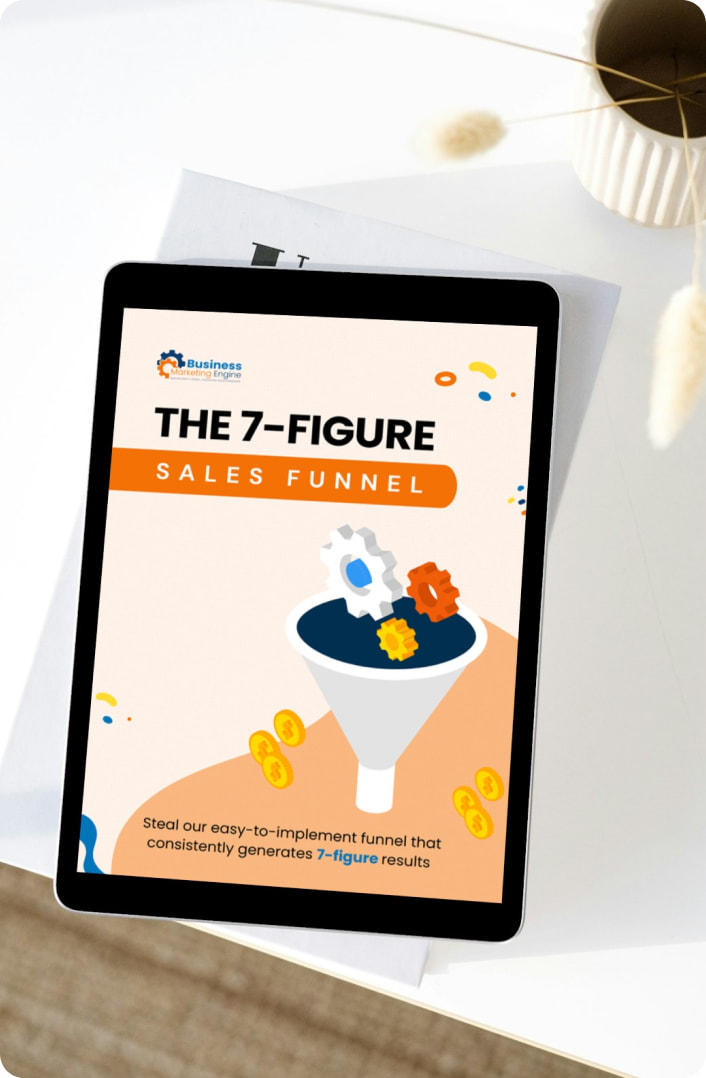Have you checked your voicemail lately? I have to admit, the chances of me even listening to a voicemail anymore, especially from an unknown number, are slim to none. All too often, I’ll have a quiet moment to check a few messages, and will press play — to be greeted by a sales pitch that isn’t relevant, isn’t helpful, and, to be honest, has me quickly swiping to delete the recording.
I don’t usually stick around long enough to hear the company’s call-to-action. Too many people are missing the mark when it comes to calling their prospects, and I don’t want you to be one of them. An effective sales pitch is based on certain components — make sure each of these foundational pieces are in yours and you could start to see your business grow, an increase in your brand awareness, and an overall improvement in the way your organization is perceived in the community.
What a Sales Pitch Is Not…
To really hone in on what makes an effective sales pitch, we need to take a look at the purpose of a sales pitch and eliminate everything that isn’t in that purpose. It’s seen as the standard line that everyone working in sales practices to encourage their prospects to take the next step. Even Business Dictionary says that it is a “popular term for an inflexible ‘formula’ or ‘canned’ sales presentation delivered in every sales situation without regard to the needs of the prospect.”
- An effective sales pitch is not a one-size-fits-all approach to attracting your customers. In a world where everyone wants to have things their own ways, and usually can, putting each person’s likes, interests, and individuality into a standard block of text can be detrimental.
- A sales pitch is not an elevator speech. While much emphasis has been placed on creating the perfect elevator speech, those brief, 30-second nuggets are written to pique the interest of a customer and invite them to a further conversation. A sales pitch, on the other hand, is a direct request with a clear call to action.
- A sales pitch is not a getting-to-know-you seminar. By the time you are meeting with your potential customers, you should have done your homework. You should know about the person with whom you are meeting, and should have a clear idea of their likes, interests, and hobbies. By learning about the person on the other end of the pitch, you’ll be able to create a more effective sales pitch; more importantly, you’ll avoid gaffes like the one Gabe experienced, when the representative making the sales pitch referred to his son as a “she.” A misspoken pronoun is noticeable, enough so that it impacted the effect the sales pitch had on Gabe’s impression of the gym. If a company representative focuses the sales pitch as a benefit for the customers they care about, getting basic details correct should be the first step. If you’re a sales representative asking someone to make an initial or bigger investment, know that someone before you go.
What is a Sales Pitch, Then?
A sales pitch is a persuasive, prepared presentation that puts your product or service at the forefront of your prospect’s thinking by demonstrating the benefit of making the purchase. This is your chance to give your prospect a clear first impression of your organization, brand, or company, and to give them all of the information needed to take the next step. You aren’t trying to whet their appetites, as you would with the elevator speech — this is the meat and potatoes of your organization’s growth.
There is something to be said for an “un-salesy” sales pitch. Rather than memorizing a script, with the same language and selling points for each and every person, representatives should be able to adapt their message to the prospect. To do that, though, you really need to know two things: your prospect and your product.
- Know your prospect: I worked in non-profit development for many years, and one of the key components of fundraising is prospect research. This technique involves detailed research into potential donors by members of a non-profit, usually employed in the development, fundraising, or major gifts departments. The ultimate goal is to discover a prospect’s giving potential and interests. Looking at political giving, other foundation giving, real estate, net worth, company affiliations and stockholdings, for example, can not only give you a better picture of the likelihood of a gift from that individual, but can also help direct your time investment. It makes more sense to pursue the qualified donor, interested in your cause, who is better able to give a higher gift.
While many of those things aren’t as vital for a sales pitch to grow your company, one thing that we found to be helpful was to understand the donor. What brought the donor to our non-profit? What are their connections to the larger philanthropic network? If they are new donors, we started by looking to see if they were interested in the work being done at the non-profit. Just as each individual had certain giving interests, people also have general interests, and if your product or service doesn’t align with their lifestyle or priorities, you might be better off working with with a different individual or company.
Before you meet with the prospect, first find out if you’re communicating with the right person. Learn more about their company and operations, and put together a clear picture of how your product or service will meet a need they are experiencing. Get some background information about how the company was started and its values. You’ll continue to develop the relationship as you work with the prospect, but whether you’re going to present or you’re cold-calling, knowing even a little bit about the prospect’s background will help you succeed.
- Know your product: In some multi-level marketing organizations, representatives are encouraged to use scripts to make in-home presentations. While I do believe notes are extremely helpful, especially when you’re presenting highly technical or detailed information, these scripts should be used as a guide, rather than the presentation itself. A product might meet a variety of needs, but some will be more important to certain prospects than to others.
Think about buying a vehicle. Some people might purchase a make or model because they appreciate the miles per gallon, while others might place a higher emphasis on the comfort of the vehicle, the safety features, or the warranty. One item can meet the needs of each individual, and it’s up to the sales representative to both understand the prospects and know the product or service well enough to highlight the features that may interest each prospect.
Once you’ve done both of those things, a few additional pieces of homework can help strengthen your proposal and increase the odds of a successful pitch.
- Prepare a return on investment projection for your prospect. Show the prospect that you’ve thought through their investment and care about their bottom line by putting together a report that shows the effect the product or service will have on the prospect’s business.
- Prepare answers for their most common objections. Most people say no for one of four reasons: authority, budget, need, and time. Before you go, think through each possible objection and include your solution in your presentation. Know enough to go into more detail if your prospect has more questions.
As a rule of thumb, the majority of the conversation should come from your prospect — between 75 and 80 percent of your presentation should be discussion with and questions from your prospect. Thorough research will help you make the biggest impact with the short period of time that is dedicated strictly to giving the best sales pitch.
7 Tips to Your Best Sales Pitch
1. Stay Calm
Throughout the entire process, it’s important that you keep yourself collected and composed. From the first conversation with the prospect to the follow-up after the presentation, keeping yourself calm will do two things. First, you’ll come across as the authority in your field. You know your product and are confident enough to discuss each aspect without getting nervous. This transmits to your prospect, as well. A potential client who can pick up on your anxiety will be uncomfortable and more likely to hesitate when it comes to taking action. Second, you’ll enjoy yourself, which will also improve your presentation skills and give your client a positive experience.
2. Practice
I said earlier to stop using scripts, and I meant it. However, it’s important to memorize and rehearse the key points of your presentation. You’ll be able to speak naturally and confidently while giving yourself points of reference should you feel the presentation is straying from the outline. Improvisation, on the other hand, leads to nerves, panic, and unorganized chatter.
3. Put Yourself in Your Prospect’s Position
As you maintain the dialogue with your potential client, don’t just listen to the words they are saying. Instead, hear their words and try to understand what they are truly saying. Be honest with them, and if it doesn’t sound like your product or service is a good fit for the prospect, don’t be afraid to tell them. Just because someone says no now doesn’t mean that your product or service will never be needed. Your integrity and truthfulness now could pay off in the long run when the prospect compares your organization to the competition.
4. Be Respectful of Your Prospect’s Time
Your product or service is not your prospect’s priority. Whether your sales pitch is through a lengthy voicemail message or a presentation that never ends, at some point, you will lose your prospect’s attention. Be concise and impactful in your portion, allow them to ask questions, and then give them a verbal wrap-up of the presentation that reminds them of the points that most interested them and why they should choose your product or service.
5. Think Like a Reporter
Journalists are taught to cover the basic questions: Who, what, why, when, where, and how. Think through these questions with respect to your organization and the prospect’s needs. How will your product help the prospect’s business? Why now? When will the prospect see a solid return? What features of your product or service will most benefit your prospect? Where does this fit in the prospect’s long-term plan? Who will this benefit — will the product streamline operations and help employees or will it improve the prospect’s offerings and benefit customers?
6. Be Clear
Don’t hide your call to action. Prospects want to know what the meeting is about and what you’re asking them to do. Ask for the sale without overselling or over talking. Really listening to your prospect and focus on the verbal and nonverbal cues being given can help you know when to ask and when to stop talking.
7. You, not I
In the nonprofit world, the most successful asks are those that put the emphasis on the recipients, showing them the impact of their gift and what they’ve done. Your pitch should focus on what’s in it for the prospect, not for your business. There are certain things most customers want to know, but for the rest, unless the prospect asks, keep the details about your company to a minimum and show them why you are the most qualified to help them solve their problems.
The Bottom Line
The pitch may present your product or service, but the sale really comes down to showing the prospect how this will benefit and improve the lives of the people who will be using your product. Remember, you’re developing a relationship with the prospect. Start to focus on the who rather than the what, listen to your prospects and tailoring your sales pitch to them, and be patient. You’ll see higher brand awareness, more interested prospects, and, most importantly, business growth and an improvement in your bottom line sales.
I’d love to hear from you. What do you think makes a great sales pitch? Have you tried anything that was a flop — or a resounding success?
If you’re not seeing great success, contact Business Marketing Engine today. We can help you tweak your sales pitch to see better results and long-lasting, business-building relationships.







